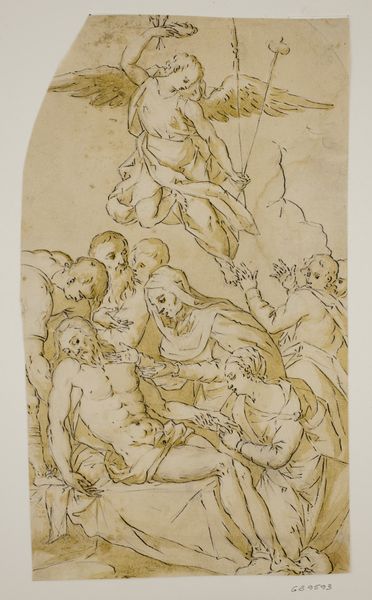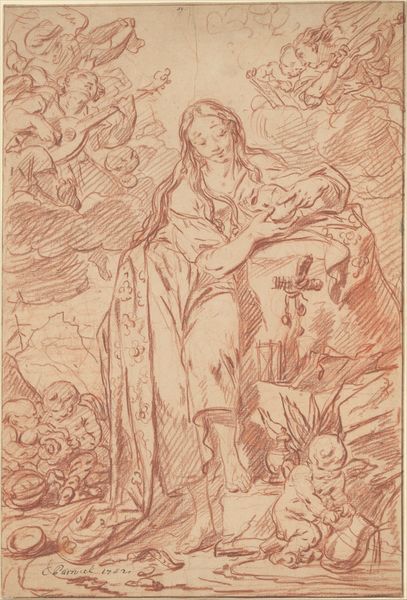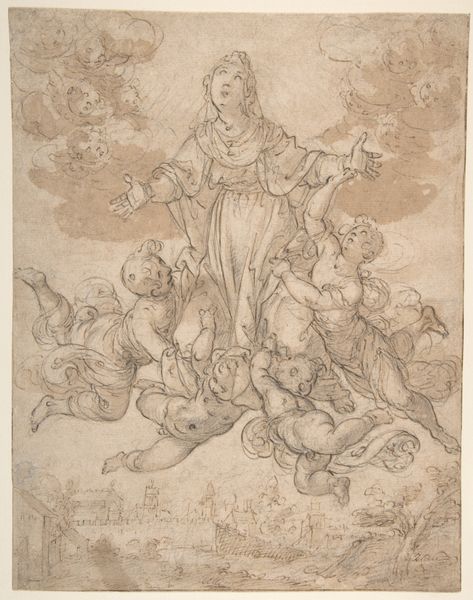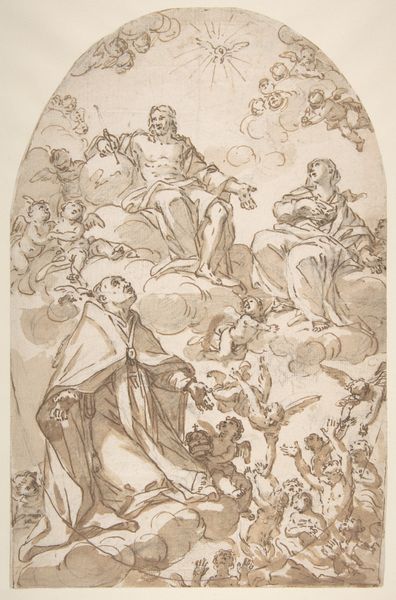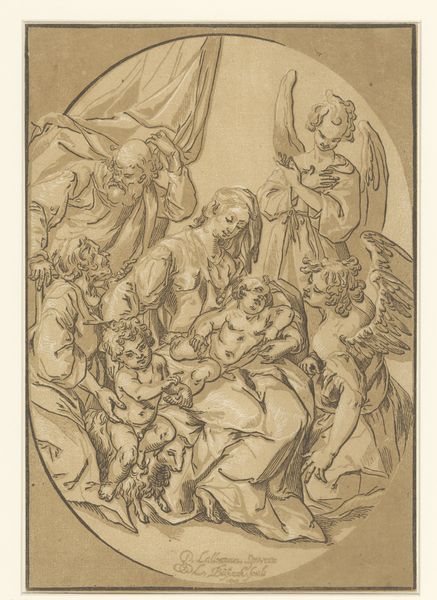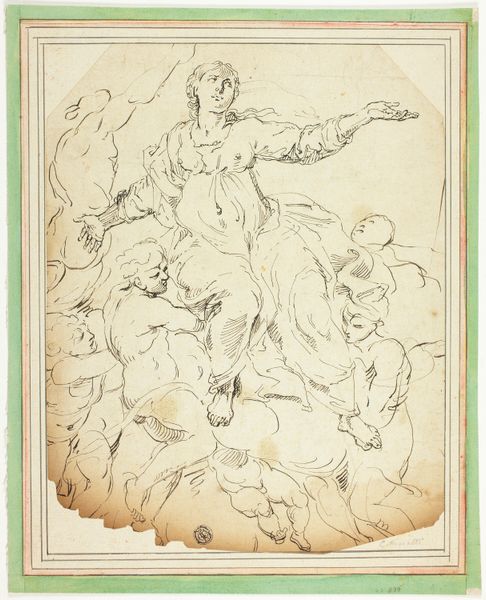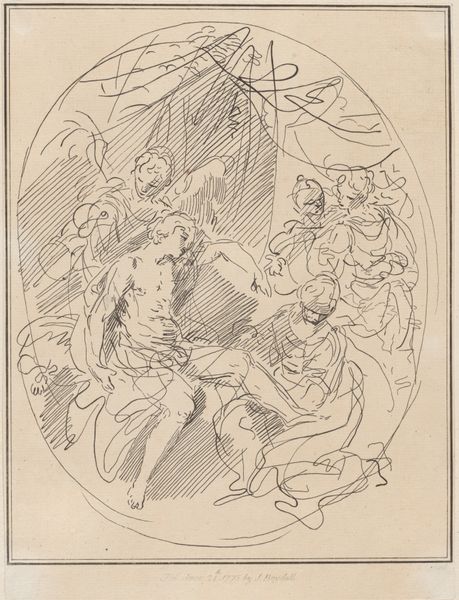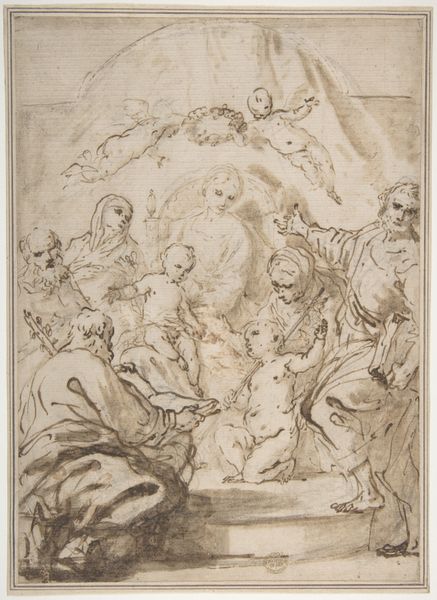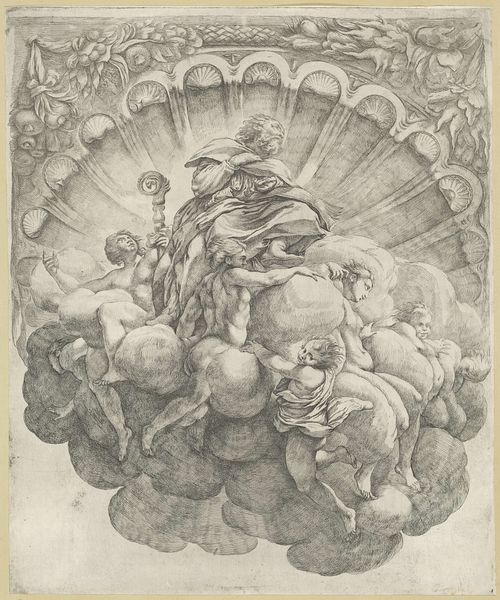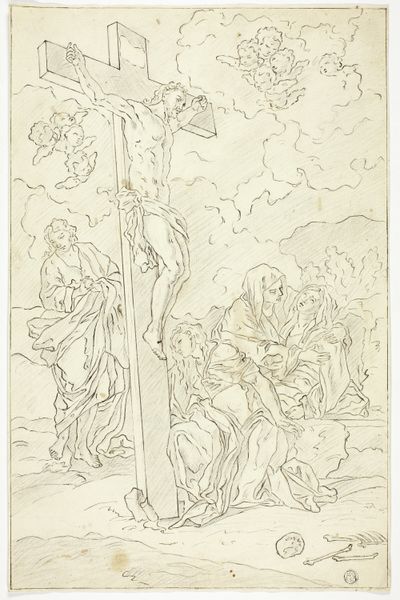
drawing, ink, pen
#
drawing
#
ink drawing
#
ink painting
#
pen drawing
#
figuration
#
ink
#
pen
#
history-painting
#
italian-renaissance
Dimensions: sheet: 41.7 × 27.9 cm (16 7/16 × 11 in.)
Copyright: National Gallery of Art: CC0 1.0
Editor: Here we have "The Virgin in Glory," a pen and ink drawing by Luca Cambiaso from the early 1560s. It strikes me as dynamic, almost swirling, despite being on paper. What can you tell us about the work? Curator: Focus first on the organization of the forms. Cambiaso employs a striking pyramidal composition, common in Renaissance depictions of the Virgin. Consider the linear quality; the ink strokes, almost like a skeletal framework, create a sense of movement. The artist has reduced the forms to their essential geometry. Notice, for example, how the drapery is defined by relatively straight lines. Editor: So, it’s less about naturalism and more about the structure underneath? Curator: Precisely. And it’s worth noting Cambiaso’s mastery of foreshortening; see how the putti closest to the viewer seem to tumble out of the pictorial space. This element enhances the dynamic effect. Are you sensing an interplay between two and three-dimensional space here? Editor: Yes, it’s like he's hinting at depth without fully committing to it. The radiating lines behind the Virgin also add to the flatness and depth. Curator: Precisely! He's toying with our perceptions. Note that this technique creates symbolic radiance that further emphasizes the central figures in the artwork. Editor: It's fascinating to see how Cambiaso uses these basic artistic elements to build something so evocative, focusing purely on form and technique. Curator: Indeed. By studying these lines and their arrangement, we gain insight into the very structure of visual representation in Cambiaso's time.
Comments
No comments
Be the first to comment and join the conversation on the ultimate creative platform.
